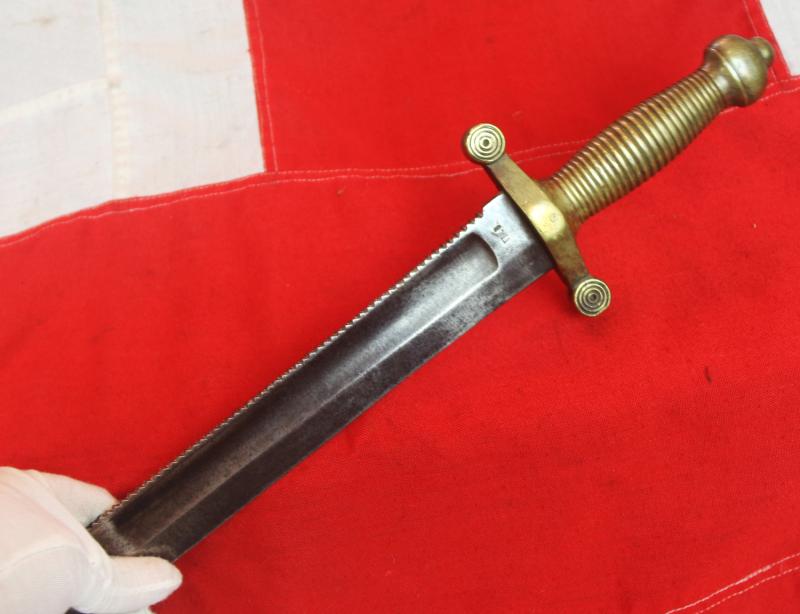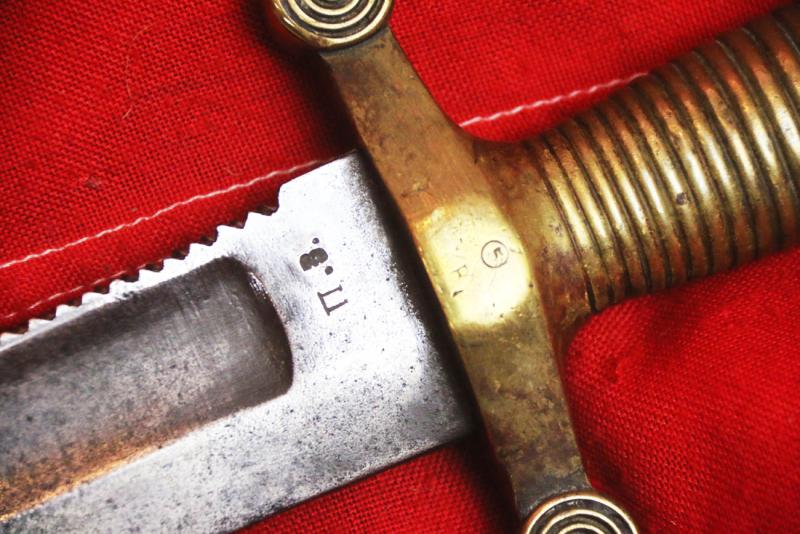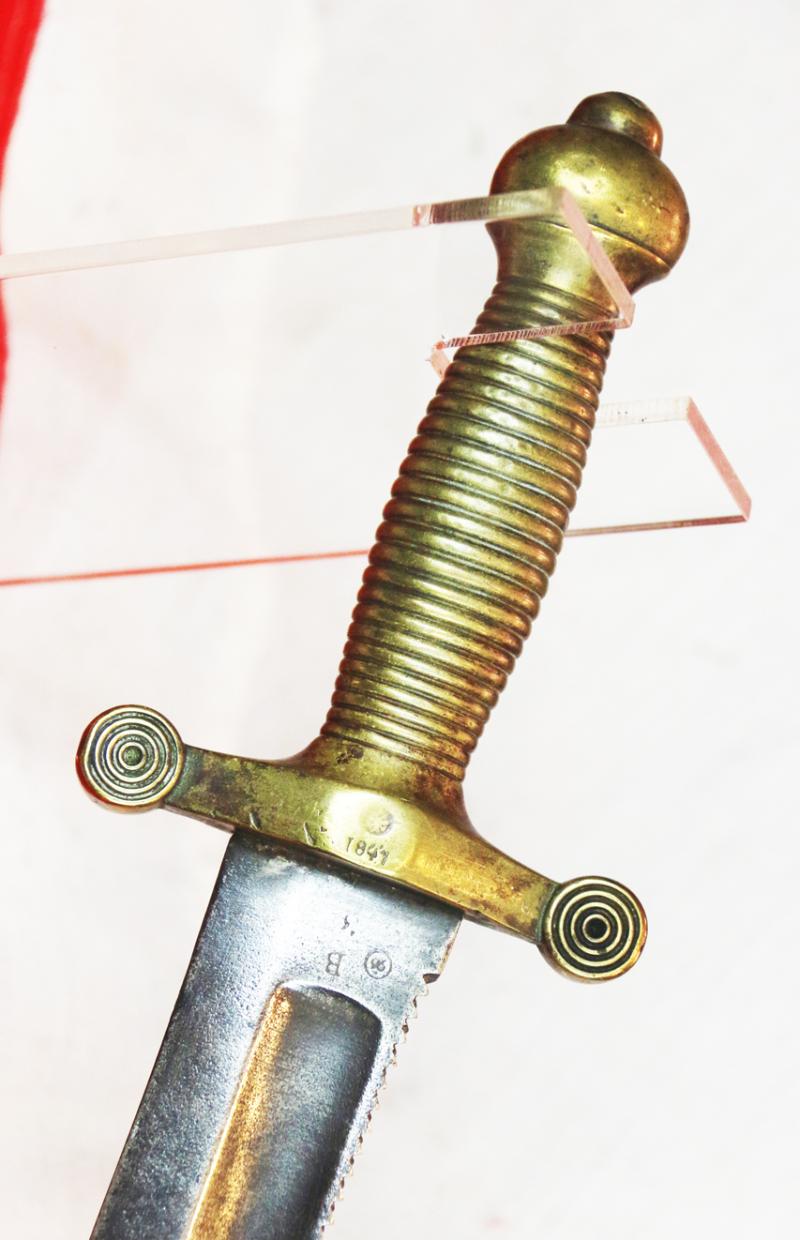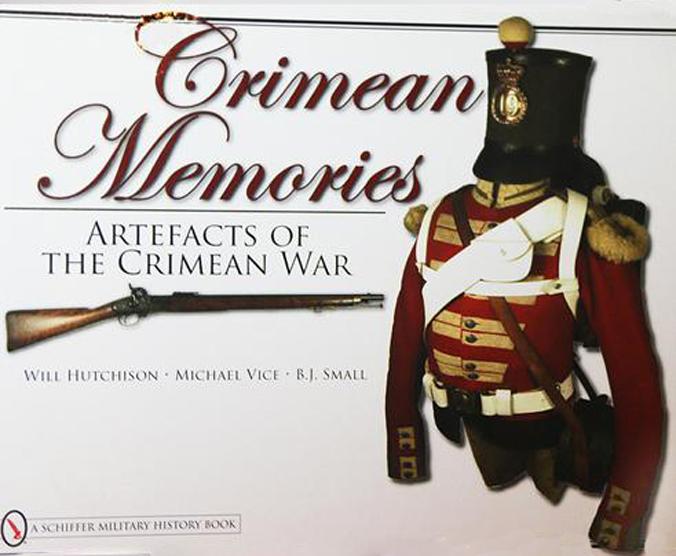A British Soldier's Souvenir of The Crimean War. An Imperial Russian Foot Artilleryman's Saw-Back Short Sword, Tesak. Used By The Russian Artillery Men To Protect the Cannon. Probably A Souvenir Of The 'Charge' Period Cavalryman
Cast brass hilt and wide saw-back steel blade, bearing numerous Romanov stamps. There is an identical example in "Crimean Memories, Artefacts Of The Crimean War" Manufacture dated 1847.
Very impressive are extremely rare Russian Imperial Model 1834 Tesak. They were adopted in March 1834 and used til 1855 only. It played an important role in the Crimean wars, used by the men protecting the cannon {artillery guns}.
Beautiful example, seldom found
In 1854 the regiment received its orders from the War Office to prepare for service overseas. Five transport ships - Harbinger, Negotiator, Calliope, Cullodon, and the Mary Anne – embarking between the 8 May and 12 May, carried 20 officers, 292 other ranks and 298 horses. After a troubled voyage, the regiment arrived at Varna, Bulgaria on the 2 June. On the 28 August the entire Light Brigade (consisting of the 4th Light Dragoons and 13th Light Dragoons, 17th Lancers, the 8th Hussars and 11th Hussars, under the command of Major General the Earl of Cardigan were inspected by Lord Lucan; five men of the 13th had already succumbed to cholera.
On the 1 September the regiment embarked for the Crimea - a further three men dying en-route.
On the 20 September the regiment, as part the Light Brigade, took part in the first major engagement of the Crimean War, the Battle of the Alma. The Light Brigade covered the left flank, although the regiment’s role in the battle was minimal. With the Russians in full retreat by
late afternoon, Lord Lucan ordered the Light Brigade to pursue the fleeing enemy. However, the brigade was recalled by Lord Raglan as the Russians had kept some 3,000 uncommitted cavalry in reserve.
During the 25 October the regiments, the Light Brigade, took part in the Battle of Balaclava and the famous Charge of the Light Brigade.
The 13th Light Dragoons formed the right of the front line. The 13th and 17th moved forward; after 100 yards the 11th Hussars, in the second line, also moved off followed by the 4th and 8th. It was not long before the brigade came under heavy Russian fire. Lord Cardigan, at the front of his
men, charged into the Russian guns receiving a slight wound. He was soon followed by the 13th and 17th. The two squadrons of the 13th and the right squadron of the 17th were soon cutting down the artillerymen that had remained at their posts. Once the Russian guns had been passed, they engaged in a hand-to-hand fighting with the enemy that was endeavouring to surround them by closing in on either flank.
However, the Light Brigade having insufficient forces and suffering heavy casualties, were soon forced to retire. Capt. Louis Edward Nolan (January 4 1818-October 25 1854), who was a British Army officer of the Victorian era, an authority on cavalry tactics, and best known for his controversial role in launching the disastrous Charge of the Light Brigade during the Battle of Balaclava. He was the first casualty of that engagement.
Over two decades ago we were delighted to buy Captain Nolan's undress sabretache that was used to carry the order in the Charge of the Light Brigade, and was recovered from beneath his and his horses bodies after the battle. It spent most of its life after the charge in two museums, one at the rebuilt and re-sited Crystal Palace in London. We were privileged to buy direct it from the original family owners with the personal assistance of the late Gordon Gardner, Militaria Expert of Sotheby's from 1979
Code: 25384






